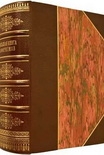Bitterhall Helen McClory (year 2 reading books .TXT) 📖

- Author: Helen McClory
Book online «Bitterhall Helen McClory (year 2 reading books .TXT) 📖». Author Helen McClory
‘Oh, I have an idea,’ I said, illuminated by swirling internal lights. ‘Yes, okay. Yes. No one should be in right now. You up for coming to see where I work? And playing with one of the new toys?’
We Have the Room
We walked quickly; shortcut between the lanes. No foxes. Leaves in great piles between parked cars. Tom had stuffed the thing in a plastic bag, I carried my lanyard. Up the steps and into the low grey university building, swipe, no guard, never any guard, down one flight of stairs. The narrow corridor of the basement stretched away, lighting up as we walked.
‘It’s spooky here.’
‘It’s mostly boring,’ I answered, stopping beside the door humbly marked ‘copier’. ‘Here’s where I spend most of my time.’
First the antechamber, coat hooks and gloves and the over-the-foot socks, which always gave me a sting of aftermath, bloodied footprints, police tape, though this quickly left as I keyed in the code and opened the second door, and let Tom go in ahead, let him work out the purpose of the place. Long rows of shelves retreating in parallel lines, like in a library, but each shelf empty, set deep and padded with black foam, cradles for what was to be put there.
‘Looks like – a Bond film,’ said Tom, in a whisper. This place was conducive to quietness. We walked to the end of the room, a strange act divorced from sound barring the click and hum of lights blinking on again with us as we advanced, the floor of the room being padded too. At the end of the wall, taking up a good chunk of the space was the specialist 3D scanner and printer. Beside it stood, tall and thick, the big grey safe containing those objects I was to begin copying in the morning.
‘Pass me that,’ I said, reaching for the bag in Tom’s hands. The crackling of the bag a disproportionately ugly sound and unnaturally loud. I pulled out one of the deeper scanner trays and plopped the kelpie inside, taking a moment to adjust it manually, before moving to the controls to see via the camera that it was correctly positioned.
Tom watched silently. I murmured to myself and touched the screen and stood back. ‘Bear with me, it takes some time for it to get things calibrated.’
‘What’s it doing?’
‘It’s scanning the shape and weight of the object, then it scans for materials. It can recognise some things easier than others; plastic, of course. Paper, leather, wood. To my knowledge no one has used it to scan a cuddly toy. Then it attempts to see if it can recreate it,’ I pointed a foot towards one of the canisters under the printer, ‘with the raw materials it has available, using its clever little robot fingers.’ I tapped at the next part, the grey square where, in other printers, a simple jet could make an object out of liquid plastic, but here, a number of needly fingers could spurt and sew together, in theory, anything of anything we could give it that it recognised how to use.
‘The loom of all things,’ I said. Ah, was I proud, those days, a show-off caretaker.
‘I always thought the advanced scanners replicated stuff out of . . . I don’t know, rearranged atoms,’ said Tom.
‘Maybe one day.’
‘So what’s in the trays?’
‘Cellulose, ink of course – though here we have some special ink canisters that we mix to recreate the exact types used in the object we want to replicate. Inks from medieval Europe, Japan, and so on. A heavy resin that resembles ceramic. We can also do a good approximation of specific glazes and ceramics, though that one hasn’t really been tested. When it gets particular, it’s a laborious process, but there’s Jenny down the hall who tests for composition in the objects and June who specialises in proprietary blending of the inks and glazes, all on site, unless it proves really tricky to source . . .’
‘What kind of things do you copy?’
‘We haven’t copied much yet, three things successfully, so far. It’s taken a year to get the room set up and the machine ordered, installed and working up to standard. There’s a box full of dud test subjects somewhere around here.’
‘But, like, what kinds of things?’
Lights flashed in the scanner tray. I rechecked the controls. It was at seven per cent physical, two per cent material.
‘The aim is to copy important rare objects from all over the world to create replicas, mostly for museums – and, if some here have their way, for some private collectors who will pretend they have a real Ming vase or whatever to impress their friends. Lots of money in that,’ I said looking at the trays. ‘Though it would have to be a medium sized Ming vase.’
‘Why?’
‘What do you mean, why?’
‘I mean, why do you need to do that?’ Tom said, looking at me. I pretended to re-examine the controls, though the percentages had not changed.
‘Why do you need to do anything? So that we can have a record. So that things won’t be irretrievably lost. There are bibles that are nine hundred years old that exist in libraries, where a single frayed bit of wiring could seal their immolation. We can copy them, allow the real one to be put in permanent storage, and have the copies available to be touched, to actually be leafed through. Delicately of course – the copying is so good it can replicate the fragility of the pages. We’re working on how to finesse that. It’s a library of Alexandria, with more politely asking for things, rather than just pulling them out of passing ships. And we can take pretty much anything deemed worthy of copying. The downside is it takes months to do the process properly. Paperwork, permissions. For books, every single page has to be individually scanned on each side to allow replication. Objects





Comments (0)